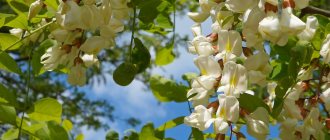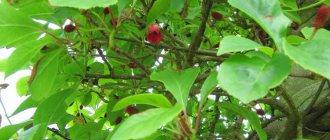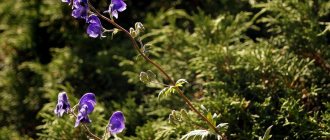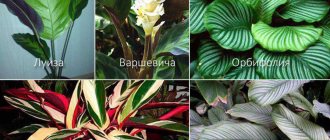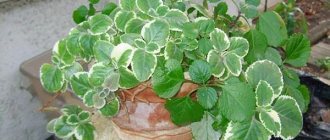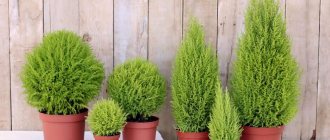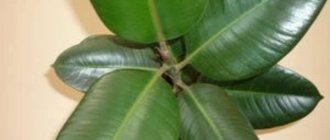Acacia is a fairly common shrub that grows in large areas of Russia. In the wild, the plant can be found in the undergrowth, various forests: pine and deciduous, as well as in mixed forests. Acacia grows both in the mountains and in clearings. The culture is quite unpretentious, grows very quickly and blooms very beautifully with beautiful, yellow, small flowers. The plant was appreciated back in the fifties of the 18th century, and began to be used for decorative purposes. Today, the bush grows in parks and squares, and also improves courtyard areas. With the help of this crop, various slopes are secured, and also used as a hedge or to protect other plants from the wind.
Botanical description
The tree caragana species (lat. Caragana arborescens) is part of the legume family (lat. Fabaceae). In cultivation since 1752, the crown of the shrub is formed by stems up to 15 cm in diameter, but by pruning yellow acacia you can get a tree. The bark is light green, smooth, with a grayish tint. The height of the ground part rarely exceeds 4 m, and the diameter of the crown is up to 2.5 m. It grows in one place for up to 50 years.
The leaf is light green (yellow in autumn), alternate, petiolate, of complex shape. On a long petiole (up to 15 cm) there are 5-8 pairs of opposite oval glossy leaves. There are spiny stipules capable of woody growth. Acacia flowers are moth-type, bisexual, with yellow corollas, and have 10 stamens. The buds are formed in bunches of 2-5 pieces in the leaf axils. The flowering season begins at the border of spring and summer. In July-August the fruits, which are cylindrical beans, ripen.
Tincture
Herbalists make an alcohol tincture from the flowers and twigs of yellow acacia, which is very successfully used in the treatment of arthritis of various etiologies, as well as rheumatism.
To prepare such a composition, you need to pour 200 g of dry and crushed raw materials into a container. It is advisable that it be a dark glass jar or bottle. Pour 500 ml of high-quality vodka into it, close it tightly, and place it in a dark place for two weeks. The bottle must be shaken periodically.
This tincture is used to rub sore joints. After this, they need to be wrapped in a warm woolen scarf or scarf. If the pain is very severe, add grated fresh horseradish to the tincture in a 1:1 ratio with the tincture.
By using this product internally, you can strengthen your immune system. The tincture, diluted with water in a ratio of 1:10, is recommended for use as a mouth rinse for various inflammations.
Spreading
The shrub can be found everywhere in the forests of Siberia, including in the Altai and Sayan Mountains; in addition, yellow acacia grows in the central and eastern regions of Kazakhstan, in the south of the Urals. It is not uncommon in the Caucasus mountains. Most often, seeds germinate in sparse undergrowth, on forest edges, and on small slopes. In the city limits you can see the plant as part of parklands.
Beneficial features
Yellow acacia is recognized by scientists as a very powerful anti-inflammatory agent. Tinctures from it treat many chronic diseases, normalize metabolic processes in the body, act as a pain reliever and heal wounds.
With the help of acacia decoction you can reduce the temperature, restore blood circulation and tidy up the skin. Tinctures strengthen the heart and blood vessels and treat cardiovascular diseases.
Decoctions help get rid of allergies, chronic bronchitis, and promote weight loss. For therapeutic procedures, the bark of the plant, its roots, leaves and sometimes flowers are used.
Planting and care
Caragana is not demanding on the composition of the soil; it can often be found along roadsides. In the garden, free areas are allotted to it, wanting to create a hedge, strengthen a slope, or cover up an unsightly view.
Hedges are formed using compact planting, leaving a distance of 70-100 cm between seedlings. Over time, the growing crowns of the bushes close together, forming an insurmountable obstacle. The required size of the hedge is achieved by pruning.
You can plant:
- in early spring after the soil has thawed, but the buds on the seedling have not yet awakened;
- in autumn after the completion of the main cycle of vegetation and leaf fall.
Planting holes are dug to a depth of 50 cm, adding peat to the soil to acidify the soil. In the future, caring for the planted plants in the garden consists of regular watering, weeding, sanitary pruning of the crown, and preventive treatments against diseases and pests. Every year in the spring, complex mineral fertilizers and compost are applied to the trunk circles, but nitrogen fertilizers are avoided, since yellow acacia does not require them.
Pruning yellow acacia caragana
Caragana is incredibly flexible. It easily tolerates shaping. Can be grown as a regular shrub. Become a living wall or a spectacular standard tree.
When to prune yellow locust? It is better to do this in early spring, before the sap begins to flow, and in the fall to remove damaged, weak and dried branches. Hedges and standard plants are trimmed annually. In the first case, this allows you to maintain the shape of the fence and avoid exposing its lower part. To give the shrub the appearance of an elegant tree, you have to carefully remove the root shoots. At the same time, form the crown of yellow acacia.
Mature shrubs are subjected to anti-aging pruning, cutting out old, heavily exposed trunks covered with lichens.
Reproduction
The shrub is easy to propagate using seeds, cuttings and grafting. For cuttings, semi-lignified annual shoots are taken, which are treated with a root formation stimulator and planted in loose soil in early summer. Successfully rooted specimens are transplanted to a permanent location with the arrival of autumn.
Before sowing, seeds are soaked until they swell. Sowing is carried out in thawed soil in open ground or for seedlings in greenhouses. Seedlings from greenhouses are transplanted to a permanent place in late spring a year later. Grafting is used to propagate hybrid varieties and obtain weeping forms on the trunk.
Diseases and pests
The crop is affected by fungal diseases: powdery mildew, rust, white rot. The most effective preventative measures: pruning and burning parts of the bush affected by the disease. Fallen leaves are also burned in the fall. If the crown is affected by rust, it is sprayed with Bordeaux mixture or copper sulfate.
Pests of yellow acacia: false scale insects, acacia aphids, borers, psyllids, glass beetles. In case of a massive invasion of insects, the plantings are sprayed with insecticides.
Infusion
An infusion of acacia flowers and leaves is no less effective. It is recommended for the treatment of diseases such as atherosclerosis, headache, diathesis, heartburn, and some gastrointestinal diseases. In addition, it, like the alcohol tincture, can be used as an anti-inflammatory agent for diseases of the throat and oral cavity.
Carefully grind two tablespoons (without a slide) of the raw material, pour 200 ml of boiling water over it and let the product brew in a tightly sealed container for two hours. After this, the composition can be filtered through two layers of gauze and taken two tablespoons three times a day.
Meaning and Application
Caragana tree is widely used not only in garden and park landscaping. The medicinal properties of the plant are highly valued. In pharmacology and folk medicine, all parts are used: leaves, bark, flowers. The inflorescences have pronounced anti-inflammatory, expectorant and antipyretic properties.
The real medicine is acacia honey, which contains 40% fructose and 35% glucose. It has a beneficial effect on the entire body as a whole, helps strengthen the immune system, and normalizes blood glucose levels. During the 2 weeks that flowering lasts, the bees manage to collect a huge amount of nectar, which is produced in flowers especially in dry weather.
All parts of caragana are used to obtain infusions and decoctions for headaches and heartburn. The roots and bark are an excellent remedy against flu and respiratory diseases, hay fever, and rheumatism. A substance, cytisine, is isolated from yellow acacia, which excites the central nervous system, increases blood pressure, and stimulates the production of adrenaline. This alkaloid is used in anti-nicotine therapy.
The wood of the plant belongs to the sound species, which are characterized by beautiful textures and unusual fiber patterns. The predominant shade of the wood is yellowish; it has a brownish core and thin sapwood. Wood is characterized by strength, flexibility and hardness. At a humidity level of about 12%, the strength of the material is 600-630 kg/m3, that is, it is actually not inferior to oak. When the wood dries, it does not warp or crack. The main disadvantage is low biostability, so the material is used only indoors. Yellow acacia is easy to process using various methods, including polishing, and varnishing.
Caragana is used mainly for making all kinds of souvenirs and dishes. The strips are used to make hoops for barrels and tubs. Large products (furniture) are not made from yellow acacia, since the stems have a very small diameter, and it is impossible to obtain large-sized parts from them.
Use in landscape design
Caragana bushes are a common plant in hedges. They are planted in single rows, as well as in a checkerboard pattern when it is necessary to obtain a wide barrier strip, for example, around a field. A powerful root system protects the soil from erosion and crumbling, so seedlings can be used to strengthen ravines and slopes.
In ornamental gardening and urban park landscaping, yellow acacia is used to enrich soils. Its root system has the valuable ability to accumulate nitrogen in the ground, which other plants need for nutrition. This is why other plants, especially those that consume large amounts of nitrogen, grow so well next to caragana.
Honey plant
Yellow acacia has long been recognized as an excellent honey plant. This plant blooms from the end of May for two weeks. If the weather is cool in May, the flowering time is reduced to 8-9 days. The plant contains the most nectar on the fifth day of flowering. Under good weather conditions, one family of bees can bring more than five kilograms of nectar.
It is most actively released in cloudy weather, after rains, but at this time the concentration of sugar is sharply reduced (up to 40%). Nectar is released abundantly at a temperature of +15 degrees, while the sugar content in it increases to 65 percent. And in sunny and dry weather, the release of this valuable product practically stops.
